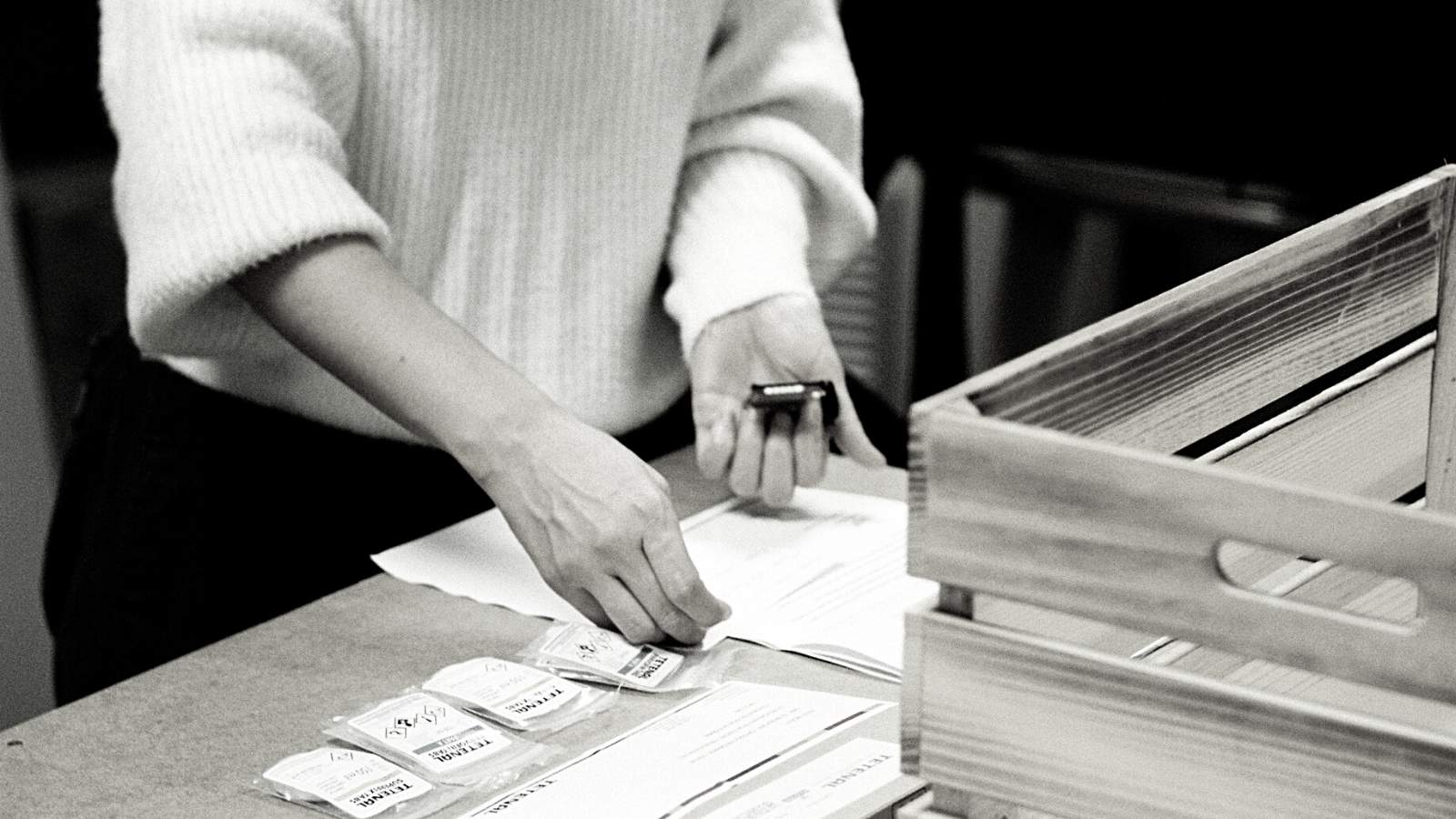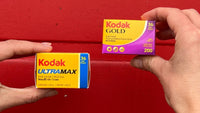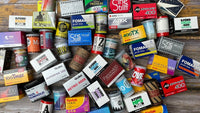Featured articles
Shop the article

The Essential Guide to Sending Film for Development: Dos and Don'ts
By Emma Lloyd
Sending off your film for development is an exciting, albeit sometimes nerve wracking process. There is a lot of build up and anticipation to receive those precious scans. There is no worse feeling than getting an email from your lab to tell you that your film came out blank. This guide will walk you through the essential dos and don'ts to ensure that your film is processed correctly and your photos turn out beautifully.
Choose a lab you trust
The first and most important choice when sending off your film to be developed, and to avoid any common mistakes, is to choose a lab you trust. We are fortunate in the UK to have a plethora of independent film labs up and down the country doing magical work- including us at the WonderLab!
It is crucial to choose a reputable film lab. Look for labs that have a good reputation and positive reviews from other photographers. Check out their Trustpilot score, or speak to friends in the community to find out who their favourite lab is.
All labs will have slightly different processes when it comes to sending off your film, and to the actual development. Factors like which scanners they use, or the type of scanners and editing software they use can all impact your final results. So make sure you do your research on this, so you can find a lab that suits your photographic style.

A reputable lab will have experienced technicians who handle your film with care and use high-quality equipment for processing. They will also have a reliable system for tracking and returning your film, ensuring that it doesn't get lost or damaged during the development process. By choosing a reputable film lab, you can have peace of mind knowing that your precious memories are in good hands.
Package your film properly
Proper packaging is essential when sending your film for development. It is no good taking beautiful photos, if you package your film in a way that means your shots become exposed on the journey.
The most important thing to remember is that film is light sensitive! If it comes into contact with light, your film will be exposed, which can result in light leaks or a completely blank roll. So it must be securely sealed from light on its journey to your film lab.
35mm
For 35mm film developing, it is wise to place your 35mm film back in the plastic film pot before you send it to your lab, and of course make sure that your film is wound back into the canister first. Don’t worry if you completely wind the leader in, as the lab has tools to retrieve it for you. It can sometimes be safer to fully wind in your rolls, especially with hand rolled film where there can be light piping (when light shoots around your film lead into the roll and causes light leaks).
120 film
Medium format film is slightly trickier, it does not come with a metal canister to keep it safe. So your lab relies on you fastening it securely, to make sure it does not get accidentally exposed. 120 film usually has a sticker, or a tab that you moisten (like a stamp) to seal the film. Make sure this has been done tightly, and to be extra safe you can use a piece of tape, rubber band or even tin foil. If the roll becomes loose, light will get in contact with the film and potentially ruin your shots.
Disposable Cameras
When sending in your disposable camera to be developed, just make sure that you don’t try to get the film out of the camera. They are full of little electrical bits and not only can you risk damaging your film but you could injure yourself. So just make sure that you package the camera up snug and send that to the lab. The technicians will be able to safely remove the film and develop it for you. You can learn more about disposable camera development here.
Packaging your film
Start by placing your exposed film in a protective sleeve or canister to prevent any damage during transit. Then, place the film in a padded envelope or box to provide additional protection, we always recommend you to re-use your Analogue Wonderland boxes.
Make sure to include your order number and information inside your parcel. If you have ordered from us before, you will have received a lab card with full instructions, and a space to write your order number on. Adding your name on there too won’t hurt! Other labs might have slightly different processes, but an order number is always essential.
If you have specific instructions for developing your film, you can include them in the notes section when making your order. But feel free to include them in your parcel too.
Finally, seal the package securely, attach your postage label and take a photo of it. At Analogue Wonderland, we offer tracked Royal Mail labels included with your development order. You will have either received a physical one in the post with a previous film order, or a link to generate one yourself online with your lab confirmation email. There is a tracking number on this label, make sure to take a photo or make a note of this, for added security when sending it to us.
Now sit back and relax, and wait to receive a confirmation email from your lab that the film has safely arrived.
Drop off
If you are anxious about using the post, you can always drop the film to your lab directly. The same rules apply- make sure your film is securely sealed, and you include an order number and any relevant developing instructions in your package.
P.S Treats for your lab team never do any harm either 😉
Include clear instructions
When sending your film for development, it's important to include clear instructions for the lab. This will ensure that they know exactly how you want your photos to be processed. Include any specific requests or preferences, such as the type of film you used, the desired level of contrast or saturation, or any special effects you want to be applied. If you have any specific cropping or framing instructions, be sure to include those as well. Providing clear instructions will help the lab understand your vision and deliver the results you're looking for.
Keep track of your film's progress and delivery
It's important to keep track of your film's progress and delivery when sending it off for development. This will help ensure that you know when to expect your photos and can follow up if there are any delays or issues. Most labs will provide a tracking number or some form of notification system so you can easily monitor the status of your film. Make sure to keep this information handy and check it regularly. Additionally, it's a good idea to provide your contact information to the lab so they can reach out to you if there are any questions or concerns about your order. By staying informed and proactive, you can ensure a smooth and successful film development process.
What to expect during the development process
When you send your film for development, it's important to know what to expect during the process. First, the lab will receive your film and carefully handle it to ensure it doesn't get damaged. They will then proceed to develop the film using the instructions you provided. This typically involves developing the film in a series of chemical baths to bring out the images.
Once the film is developed, it will be dried and inspected for any imperfections. The lab will then scan the film to create digital files or print the images onto photographic paper, depending on your preference. Finally, the developed film and any prints or digital files will be carefully packaged and returned to you. The entire process can take anywhere from a few days to a couple of weeks, depending on the lab's workload and the specific services you requested.

Conclusion:
And there you have it, the reel-to-real journey of sending your film for development, encapsulated in dos and don'ts that are as vital as that final exposure. Remember, it all starts with trust – choose a lab that vibes with your artistic wavelength. Secure packaging? Check. Light is your film's nemesis, so ensure it's sealed snugly for its journey.
Communicate your needs with your lab and you will get the perfect results in your final scans and prints.
For more tips on different ways of sending film, check out Kodak's film transportation guide and our blog about travelling with film.
Follow us on Social Media
Subscribe to our newsletter 💌
Sign up for our newsletter to stay up to date on film photography news, sales and events:
Free Tracked Shipping
On all UK orders over £50
Passion For Film
An unbeatable range and an on-site lab
Our Customers Trust Us
Thousands of independent 5* reviews
All Deliveries are Carbon Neutral
Independently audited and verified by Planet
- Opens in a new window.






1 Comment -
John Wire •
How do I find the link to print the address label to sned my film for developing?
thanks.
John.